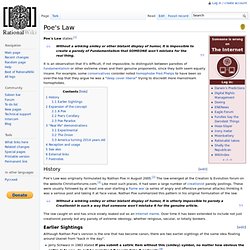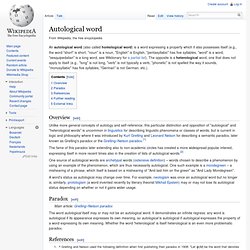

Saippuakivikauppias. Finnish[edit] Etymology[edit] saippuakivi + kauppias Noun[edit] saippuakivikauppias soapstone vendor Declension[edit] Usage notes[edit] Probably only exists as a curiosity, an example of a long palindromic word.

Related terms[edit] saippuakauppias. Proto-Indo-European language. Cuneiform. Emerging in Sumer in the late 4th millennium BC (the Uruk IV period), cuneiform writing began as a system of pictographs.

In the third millennium, the pictorial representations became simplified and more abstract as the number of characters in use grew smaller, from about 1,000 in the Early Bronze Age to about 400 in Late Bronze Age (Hittite cuneiform). The system consists of a combination of logophonetic, consonantal alphabetic and syllabic signs.[2] The original Sumerian script was adapted for the writing of the Akkadian, Eblaite, Elamite, Hittite, Luwian, Hattic, Hurrian, and Urartian languages, and it inspired the Ugaritic and Old Persian alphabets. Cuneiform writing was gradually replaced by the Phoenician alphabet during the Neo-Assyrian Empire. By the 2nd century AD, the script had become extinct, and all knowledge of how to read it was lost until it began to be deciphered in the 19th century. History[edit] Proto-literate period[edit] Copula (linguistics) Poe's Law. Poe's Law states:[1] It is an observation that it's difficult, if not impossible, to distinguish between parodies of fundamentalism or other extreme views and their genuine proponents, since they both seem equally insane.

For example, some conservatives consider noted homophobe Fred Phelps to have been so over-the-top that they argue he was a "deep cover liberal" trying to discredit more mainstream homophobes. [edit] History Poe's Law was originally formulated by Nathan Poe in August 2005.[2] The law emerged at the Creation & Evolution forum on the website Christianforums.com.[3] Like most such places, it had seen a large number of creationist parody postings. These were usually followed by at least one user starting a flame war (a series of angry and offensive personal attacks) thinking it was a serious post and taking it at face value. The law caught on and has since slowly leaked out as an Internet meme. [edit] Earlier Sightings. Autological word. An autological word (also called homological word) is a word expressing a property which it also possesses itself (e.g., the word "short" is short, "noun" is a noun, "English" is English, "pentasyllabic" has five syllables, "word" is a word, "sesquipedalian" is a long word, see Wiktionary for a partial list).

The 10 Coolest Foreign Words The English Language Needs. Have you ever blurted out, "Wow, that guy is just so...so...

" and then were left floundering with nothing to say? Well, it's not always your fault. English doesn't have words for every situation, or even the ones that happen every damned day. Fortunately, other languages usually do. And since we already borrow words from them (just recently we've taken "schadenfreude," the German word for pleasure in someone else's misfortune) here's a few that we need to pick up right away: Bakku-shan (Japanese) Means: A beautiful girl... as long as she's being viewed from behind.
Say you're in a bar, and you look over to see the most incredible sight you've ever seen: a tall, slim woman with a waterfall of dark copper hair, an ass like a fresh peach in shrinkwrap and legs all the way down to the floor. That's when she turns to look at you. Bile rises in your throat. Congratulations, you have just been a victim of bakku-shan: a girl that looks attractive from behind, but not from the front. Dictionary definition of 'siphon' has been wrong for nearly a century. The Oxford English Dictionary gives the definition of siphon as a tube for 'drawing off liquids by means of atmospheric pressure'.

Photograph: Roger Tooth/Guardian Perpetuated by dictionaries for nearly a century, it's surely the most persistent scientific howler in the history of the English language. Siphons – those ingenious plastic tubes we use to fill or drain everything from aquariums to petrol tanks – move liquid by "the force of atmospheric pressure". Except, how could a siphon possibly work by a difference in pressure when atmospheric pressure is the same for the liquid at both ends of the tube? Bleeding obvious when you think about it. And yet according to the Guardian science desk's own coffee-stained Collins, a siphon is "a tube placed with one end at a certain level in a vessel of liquid and the other end outside the vessel below this level, so that atmospheric pressure forces the liquid through the tube and out of the vessel".